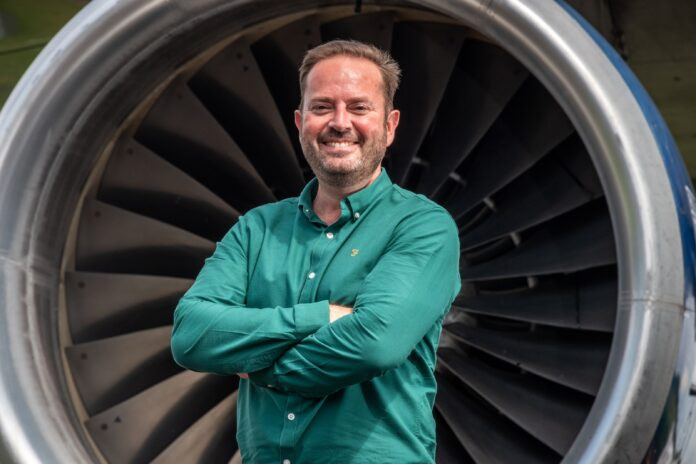

Firefly Green Fuels has found a unique way to make ultra low carbon jet fuel and it’s in what we flush down the toilet every day
James Hygate has always been fascinated by alternative ways of creating fuel. Over 20 years ago he started experimenting in his garage, making biodiesel, and founded Green Fuels. The company sells biodiesel-making equipment which converts cooking oil into fuel and has clients all over the world.
With Hygate’s latest venture, Firefly Green Fuels, he has a far more ambitious goal. He plans to transform how the world’s airlines are powered with a new, innovative, sustainable fuel made from sewage.
“I’ve always liked the idea of taking a waste product and turning it into something useful,” says Hygate.
“Sewage is a problem and a very undesirable waste. Whereas sustainable jet fuel is a major commodity. Being able to create a valuable thing from waste seems quite magical, but really it’s just great chemistry.”
The company has gained £5m of funding from ultra low-cost airline Wizz Air, as well as its first order for fuel – up to 525,000 tonnes. Hygate knows the airline industry is pursuing solutions like this and is on the cusp of major change.
“Many in the airline industry want to decarbonise and the only way it can be done is through sustainable aviation fuel, or ‘SAF’, as it’s commonly called. However, there’s just not enough SAF being produced and what’s needed are really sustainable feedstocks to make it.”
With processed sewage waste, Hygate saw a resource which was all too plentiful in supply. It was a way to turn a problem into a solution.
Green Skies
In 2021, Hygate, his business partner Dr Paul Hilditch and research director Dr Sergio Lima entered the ‘Green Fuels, Green Skies’ competition organised by the Department for Transport, winning a £2m research grant.
The research team, led by Lima, were already experimenting with a process called hydrothermal liquefaction or ‘HTL’.
In simple terms, the HTL process involves taking sewage sludge provided by the water utilities and putting it into a high pressure reactor, which is energy efficient and allows the processing of wet materials without drying them first. The sludge begins to separate into two useful materials. One is a biochar, or powder, and as a fertiliser and supplied to the agricultural industry. The other is a bio-oil, or crude, which can be refined into jet fuel.
British water companies are very interested in working with Firefly and Hygate says his company is offering them a long term solution for dealing with their waste stream.
“Every year, we produce 57 millions tonnes of sewage in the UK, this is a vast amount, after treatment this is eventually spread on fields, a practice that is set to stop. But because it’s so abundant and we are never going to run out of it, it also presents a huge opportunity,” Hygate explains.
Carbon impact
Firefly has made several batches of its innovative new fuel and independent tests in the US and Germany show it has a near identical chemical composition to standard A1 fossil jet fuel.
“The results really surprised those testing it. I don’t think they expected sustainable aviation fuel made from sewage to be so chemically similar to standard jet fuel. It means our fuel can likely be dropped in and mixed with existing fuels. Its use doesn’t require new aircraft or engines.”
Firefly’s team also worked with Cranfield University to examine the fuel’s life cycle carbon impact. They concluded that Firefly’s fuel has a 90 percent lower carbon footprint than standard jet fuel.
“Jet fuel is made from fossil fuels, which are the result of trees and plants being buried in the ground and being transformed under the earth’s crust over millions of years. Extracting and using them is all bad in terms of carbon emissions.
“However, Firefly’s fuel is made from a cycle lasting just a few days or weeks. Plants growing today are eaten, pooped out and turned into sewage and then into fuel. We’ve just cut millions of years off the process and that’s a lot better, from an environmental point of view.”
“Any fuel used in planes has to be thoroughly checked for obvious reasons. But as ours is so similar to standard jet fuel we’re feeling confident,” says Hygate.
Meanwhile, the company is preparing plans to build a demonstrator plant in the UK to start manufacturing large quantities of fuel and is looking for investors for this stage of development.
“We have a great team here who are all really ambitious and concerned about pollution and the climate crisis. It is a global issue and we now want to build a global business to address it.
“Processed sewage is the same the world over, so we can make jet fuel anywhere, in theory. There’s a lot of sewage in the world, which is a big problem, but it could turn out to be part of our salvation.”










